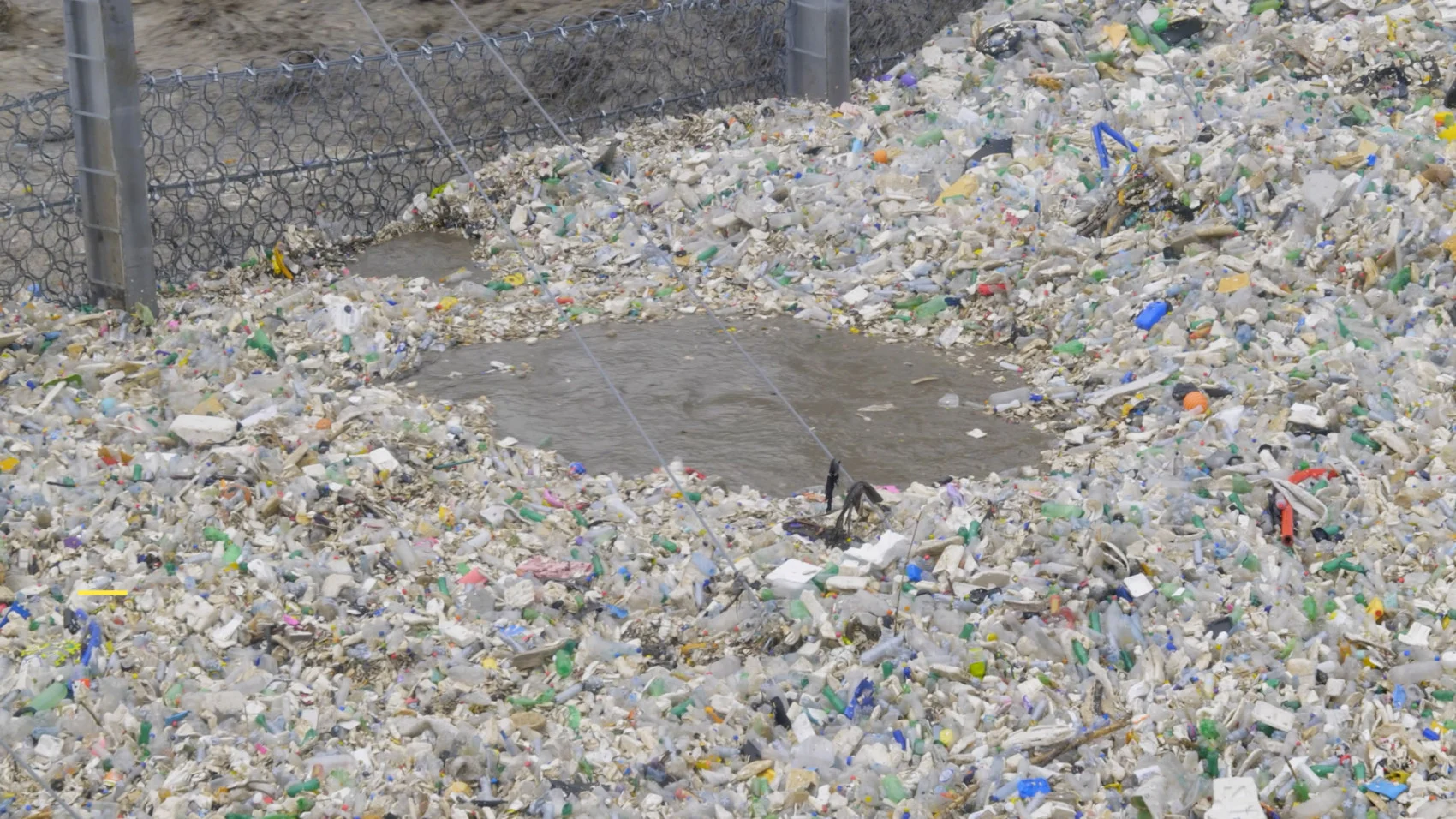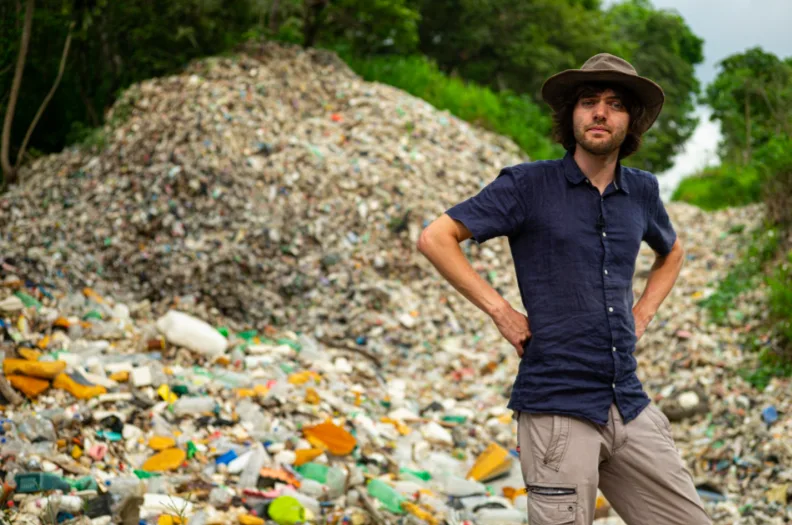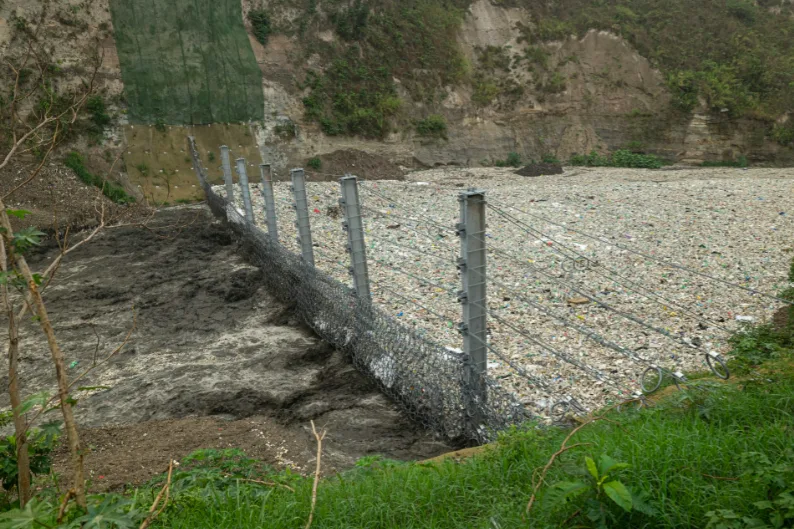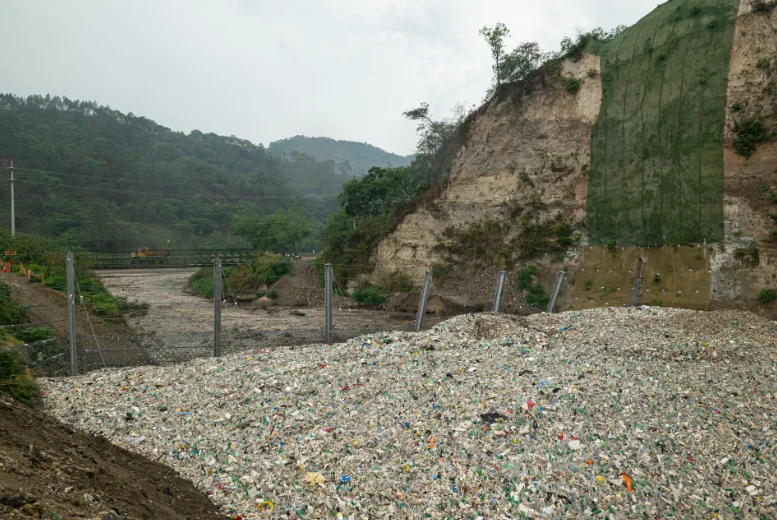
Largest river in Guatemala choked by garbage that causes "trash tsunamis"
The plastic industry emits at least 232 million tons of greenhouse gases annually, which is equivalent to the emissions from 116 coal-fired power plants, experts say.
A recent video of the Rio Motagua in Guatemala shows a dystopian landscape — the sound of piles of plastic garbage crashing against each other, loudly crinkling as the wind blows over the severely polluted river.
It seems that for every thousand pieces of garbage there is the odd tree branch floating in the dirty water.
The Ocean Cleanup, a company developing technologies to reduce plastic pollution, claims that the Rio Motagua is the world's most polluting river. An estimated 20,000 tonnes of plastic flow through this river into the Caribbean Sea each year.

Boyan Slat, CEO and Founder of The Ocean Cleanup, in Guatemala. (The Ocean Cleanup)
According to the company, there are several reasons why such extreme volumes of trash flow through Rio Motagua, the largest river in Guatemala.
A landfill is located at the top of the river and The Ocean Cleanup states that unlicensed waste dumping is a significant local issue. Seasonal trends of heavy rainfall also result in heavy trash flows and “trash tsunamis.”
Despite an abundance of lakes and rivers in Guatemala, World Bank data states that 54 per cent of water systems in the country were at “high risk” or “imminent risk” for human health in 2018. Access to clean water is also becoming more limited due to severe droughts and flooding associated with climate change.
To minimize the amount of trash that flows into the ocean, The Ocean Cleanup designed the Interceptor Trashfence, which is a system of steel fences that prevent large volumes of trash from passing through.

Interceptor 006 attempts to halt a trash tsunami, Rio Las Vacas, Guatemala. (The Ocean Cleanup)
The Trashfence uses concepts from avalanche and rockfall protection technologies and will be constructed in a dry riverbed where flash floods carrying trash are expected. After the water flows through the Trashfence, excavators and trucks remove the captured garbage before the next flash flood occurs.
The Trashfence measures 50 metres wide and eight metres in height and is still in the experimental stage. However, three Interceptors have been deployed in Kingston, Jamaica.
The company stated that they are working in collaboration with city authorities in Guatemala and hope that authorities will soon be able to address civic waste management issues.

Interceptor 006 in Las Vacas river, Guatemala, during the start of the flash flood. The Ocean Cleanup’s first Interceptor Trashfence, piloted in May/June 2022. (The Ocean Cleanup)
In addition to the health and environmental impacts of plastic waste, significant emissions are associated with plastic manufacturing and decomposition. A study from Bennington College and Beyond Plastics estimated that the plastic industry emits at least 232 million tons of greenhouse gases annually, which is equivalent to the emissions from 116 coal-fired power plants.
“Our estimates suggest that stopping the flow of plastic in this one river could have a proportionally similar reductive impact on plastic emissions as the elimination of all air travel would have on carbon emissions,” The Ocean Cleanup stated in a press release.
Thumbnail image: Rio Motagua, Guatemala. (AFPTV)












